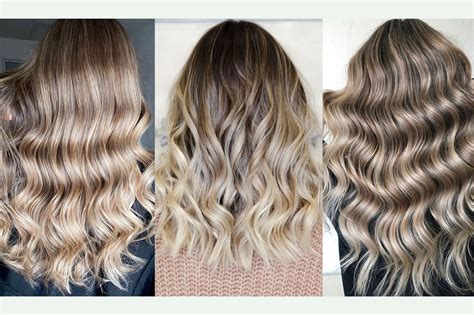Introduction
Ombre and balayage are two of the most popular hair coloring techniques, but understanding the subtle differences between them is crucial for achieving your desired look. This article delves into a comprehensive comparison of ombre and balayage, highlighting their key distinctions to empower you with informed decision-making.

1. Gradient vs. Blending: The Foundation of the Technique
Ombre:
– Creates a gradual transition between two or more shades of hair color.
– The demarcation line between colors is more pronounced, resulting in a visible gradient effect.
Balayage:
– Involves hand-painting the hair with multiple shades.
– Seamlessly blends colors, creating a more natural, sun-kissed look.
2. Placement: From Roots to Tips
Ombre:
– Typically starts closer to the roots, with a darker shade at the top gradually fading into a lighter shade at the ends.
– Can be placed on the entire head or specific sections, such as the front or crown.
Balayage:
– Focuses on the mid-lengths to ends of the hair.
– Intentional placement of highlights creates a dimensional effect, mimicking the natural fading caused by sunlight.
3. Maintenance: Longevity and Touch-Ups
Ombre:
– Requires regular upkeep to maintain the gradient effect.
– Touch-ups are necessary to blend the regrowth or extend the length of the gradient.
Balayage:
– Generally requires less frequent maintenance.
– The blended nature of the colors allows for regrowth to be less noticeable, extending the time between touch-ups.
4. Versatility: Tailoring to Your Style
Ombre:
– Suitable for individuals who prefer a bold, statement-making look.
– Can be customized to complement different hair colors and lengths.
Balayage:
– Ideal for those seeking a more subtle, natural appearance.
– Perfect for creating a dimensional effect that enhances thickness and movement.
5. Cost: Investment in Your Transformation
- The cost of both ombre and balayage varies depending on the length and thickness of your hair, the complexity of the design, and the skill of the stylist.
- In general, ombre tends to be slightly more affordable than balayage due to its more streamlined application process.
Tips and Tricks
- Research both techniques thoroughly and consult with a skilled stylist before making a decision.
- Consider your skin tone and natural hair color when selecting shades for ombre or balayage.
- Use color-protecting shampoos and conditioners to maintain the vibrancy of your color.
- Avoid excessive heat styling to prevent hair damage and fading.
Common Mistakes to Avoid
- Over-processing: Excessive bleaching can damage hair and lead to breakage.
- Unnatural Blending: Poorly blended ombre or balayage can result in a harsh or striped appearance.
- Inconsistent Coverage: Uneven distribution of color can create a patchy, unflattering look.
- Inadequate Maintenance: Neglecting touch-ups can compromise the integrity of the gradient or blend.
FAQs
1. Which technique is more permanent?
Answer: Ombre requires more frequent touch-ups than balayage.
2. Can you combine ombre and balayage?
Answer: Yes, a technique known as “sombré” combines the gradient effect of ombre with the subtle blending of balayage.
3. Is ombre or balayage better for fine hair?
Answer: Balayage is generally more suitable for fine hair as it creates the illusion of volume and thickness.
4. Can ombre or balayage damage my hair?
Answer: Both techniques involve bleaching, which can potentially damage hair if over-processed. Consult a professional stylist to determine the best approach for your hair health.
5. How often should I touch up my ombre or balayage?
Answer: Touch-ups are recommended every 6-8 weeks for ombre and every 10-12 weeks for balayage.
6. Can I do ombre or balayage at home?
Answer: While it’s possible, it’s highly recommended to consult a professional stylist for optimal results and to minimize the risk of hair damage.
7. Are there any alternative hair coloring techniques?
Answer: Yes, other techniques include highlights, lowlights, and temporary color.
8. What is the difference between “babylights” and “microlights”?
Answer: Babylights are finer and more closely spaced highlights, while microlights are even finer and create a more blended effect.
